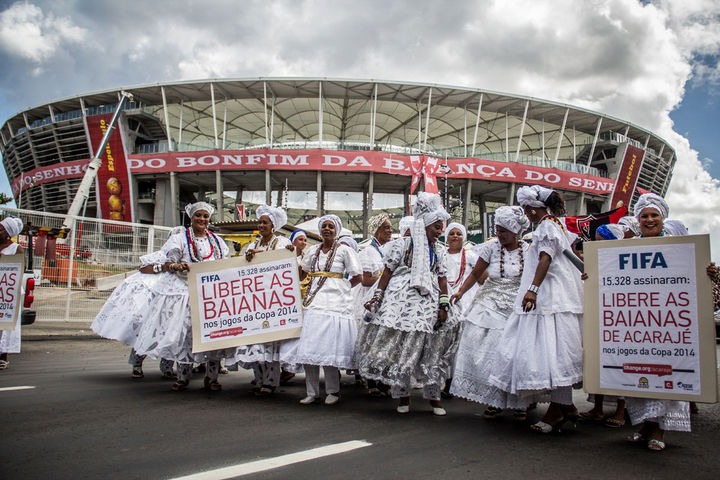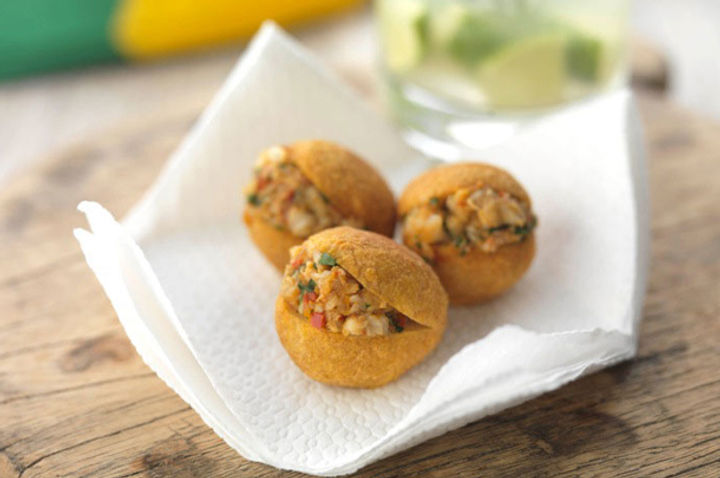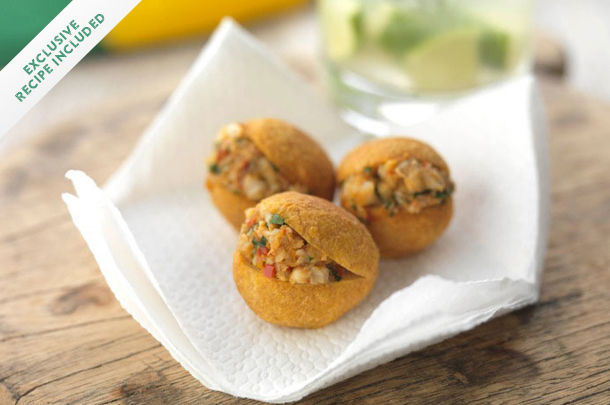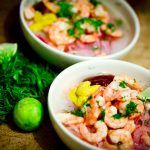Well, the hosts may have crashed out in spectacular fashion, but there is still a lot to celebrate about the Brazilian World Cup. With more goals per game than we have seen in a generation – and the shock exits of favourites Spain and Brazil – this will go down as one of the greatest World Cups of all time.
Tear-stained Brazilians may not quite be able to face up to the fact right now, but they were an integral part of that. From the carnival atmosphere to the food, there has been more flair from the public this tournament than their national side. Inside the stadiums you may be restricted to the sponsors’ fare of burgers and hotdogs, but outside Brazilian street food has reigned supreme – and they had to fight FIFA for the right to do so.
Acarajé, a local delicacy since the times of the slave trade, is traditionally sold on the streets by ladies in white dressed called baianas. The dish is a pattie made from black-eyed beans crushed into a paste, deep-fried and stuffed with shrimp. It’s a familiar sight on cobbled streets all over north-east Brazil.
But during the FIFA Confederations Cup last year, also held in Brazil, baianas in Salvador found they were banned from the games at the city’s Itaipava Arena Fonte Nova stadium. Worse still, they weren’t even allowed to sell their food within a mile of the stadiums during match days.

That didn’t sit well with the baianas, who took to the streets to protest, give out free acarajé at the stadium and publicise a petition that finished with 16,000 signatures. The campaign, “Libere as baianas”, put real pressure on FIFA, who eventually caved; the baianas won the right to sell within a mile of the stadium and even to have six acarajé vendors at the games. This deal was extended across all the stadiums and to the World Cup this year, so traditional Brazilian food had its rightful place in the celebrations.
In honour of people power and delicious, downright unhealthy street food, we asked the UK’s only Brazilian-born Michelin-starred chef, Marcello Tully, for an acarajé recipe. For our interview with him and more recipes, click here. For some deep-fried goodness, read on!
Marcello’s vatapa-stuffed acarajé recipe
Makes 10-15
For the acarajé
450g black-eyed beans
3 medium onions, roughly chopped
360ml organic palm oil
360ml vegetable oil
For the vatapa
300g dried processed shrimps (soaked in boiled water for 30 minutes then drained)
85g unsalted cashews
85g unsalted peanuts
250g cooked crabmeat
330g stale bread, crusts removed
840ml unsweetened coconut milk
1 large tomato, roughly chopped
1 medium onion, roughly chopped
2 tablespoons fresh ginger, roughly chopped
1 handful of coriander, roughly chopped
1 red chilli, finely chopped
2 cloves of garlic, finely chopped
30ml organic palm oil
In a large bowl, cover beans with water and soak overnight or for up to 24 hours.
On the day, make the vatapa first. Pulp the shrimps in the food blender and tip it to a bowl. Next pulp the bread, then add the cashews and peanuts and process for 2 minutes and add to the bowl with the shrimp.
In a large saucepan over a medium-high heat, add a lug of oil, then the onions, garlic, ginger and red chillies, and sweat for 2-3 minutes. Add all the remaining ingredients and cook for 5 minutes, then season to taste. Add the crabmeat at the last moment to warm through. Take it off the heat and mix in the coriander. Leave to stand.
Next comes the acarajé. While still soaking, rub the beans between the palms of your hands to free the outer skins, which should float to the surface. Scoop off the skins and discard. Drain the bowl then re-fill it – discard any more skins and repeat until none float to the surface.
In a food processor, blitz the beans and the onions. Add to a large mixing bowl and season with salt. Beat the batter for a few minutes with a wooden spoon, until it is light and fluffy. Meanwhile, in a large pan, heat the palm oil and vegetable oil.
With a large wooden spoon, form golf balls of batter, then gently drop them into the hot oil. Fry small batches for about 6 minutes (or 3 to 4 minutes on each side). Once they turn bright orange and crispy on the outside, remove them from oil, and transfer to a plate covered with a paper towel to drain. Once they’re all cooked, carefully carve a slit into each one across the longest side, and fill with warm vatapa. Serve immediately.

For more countries from Jamie’s Foodie World Cup, click here.
Protest image: Nija Midia





















